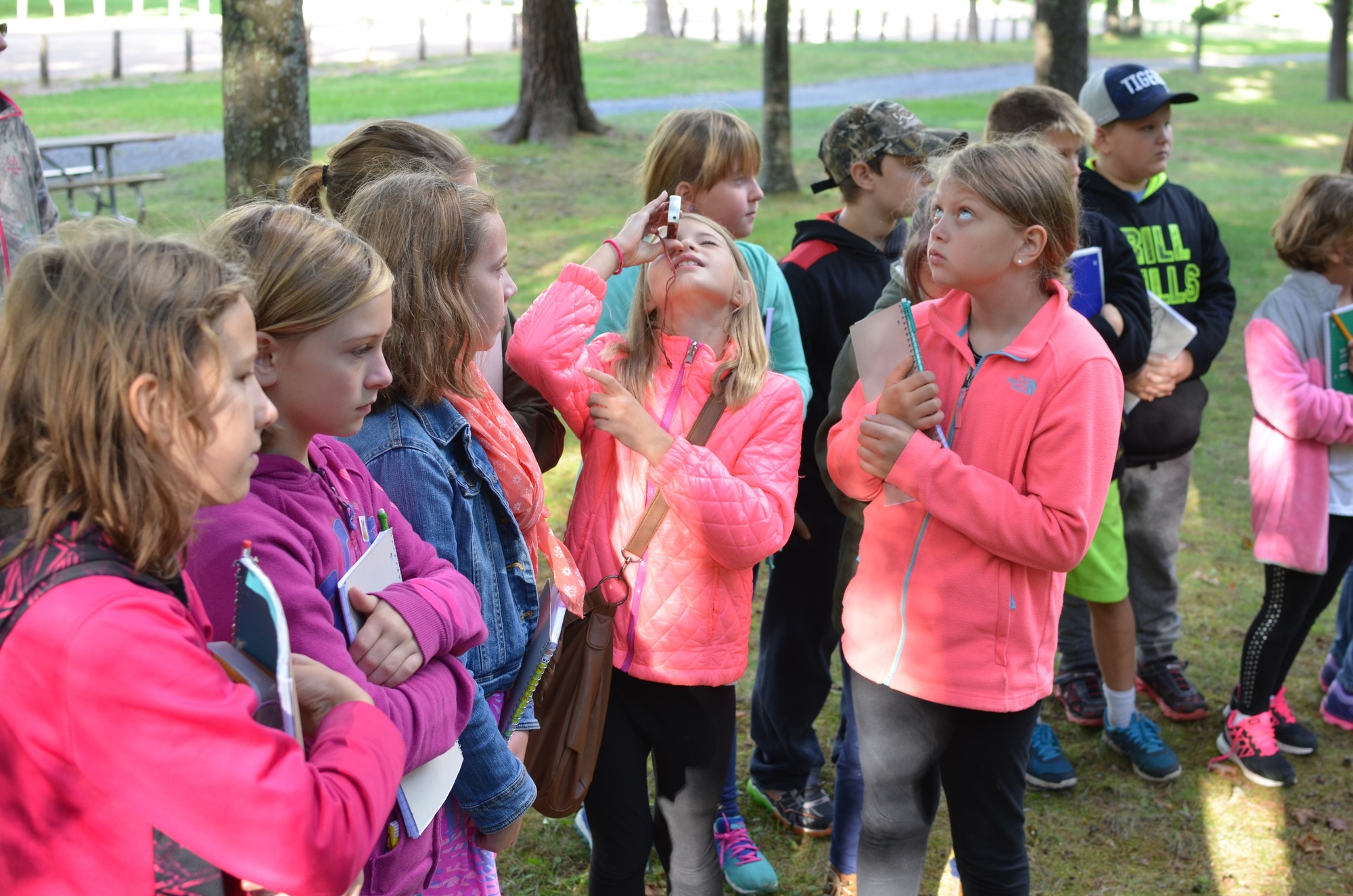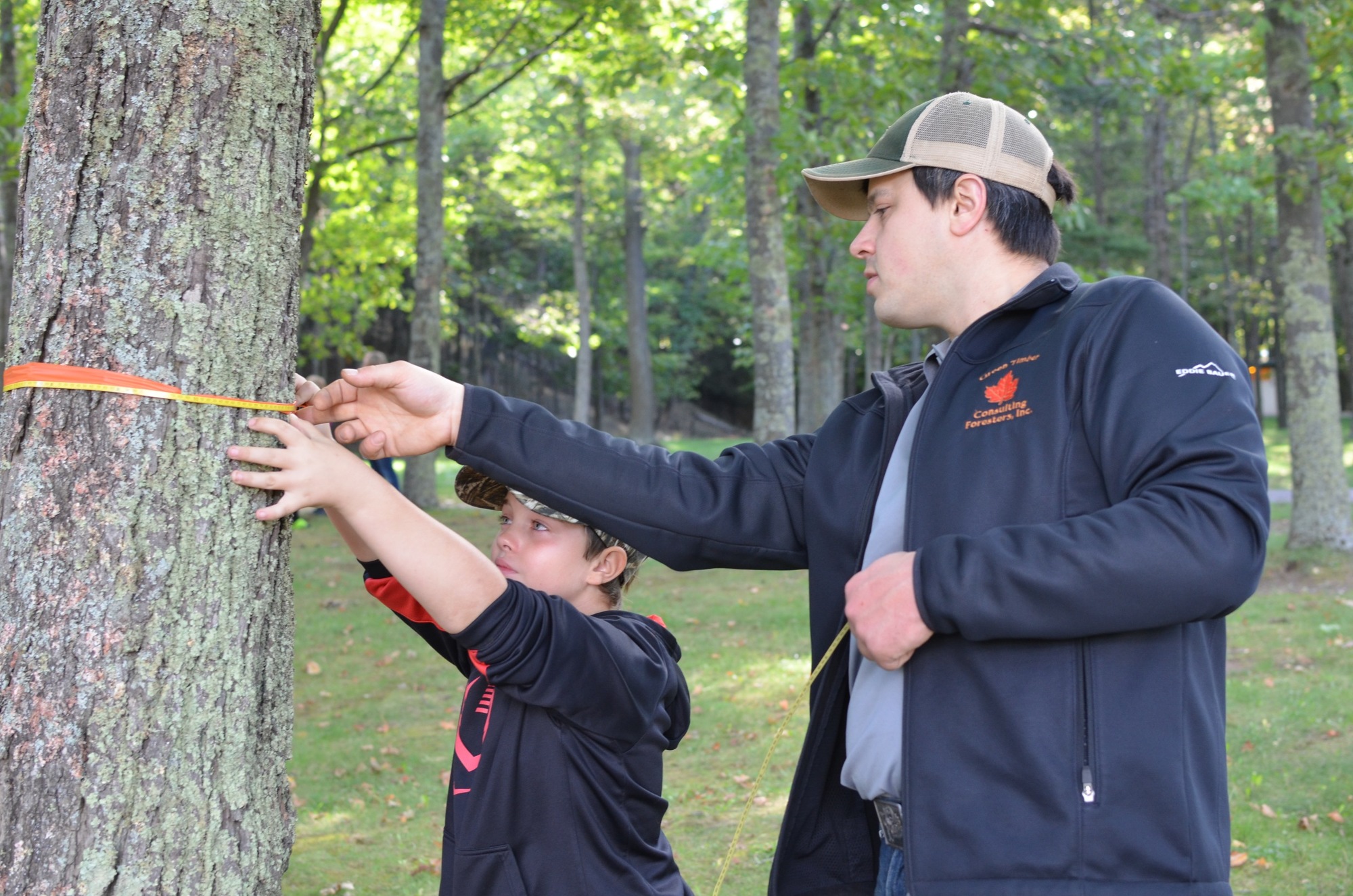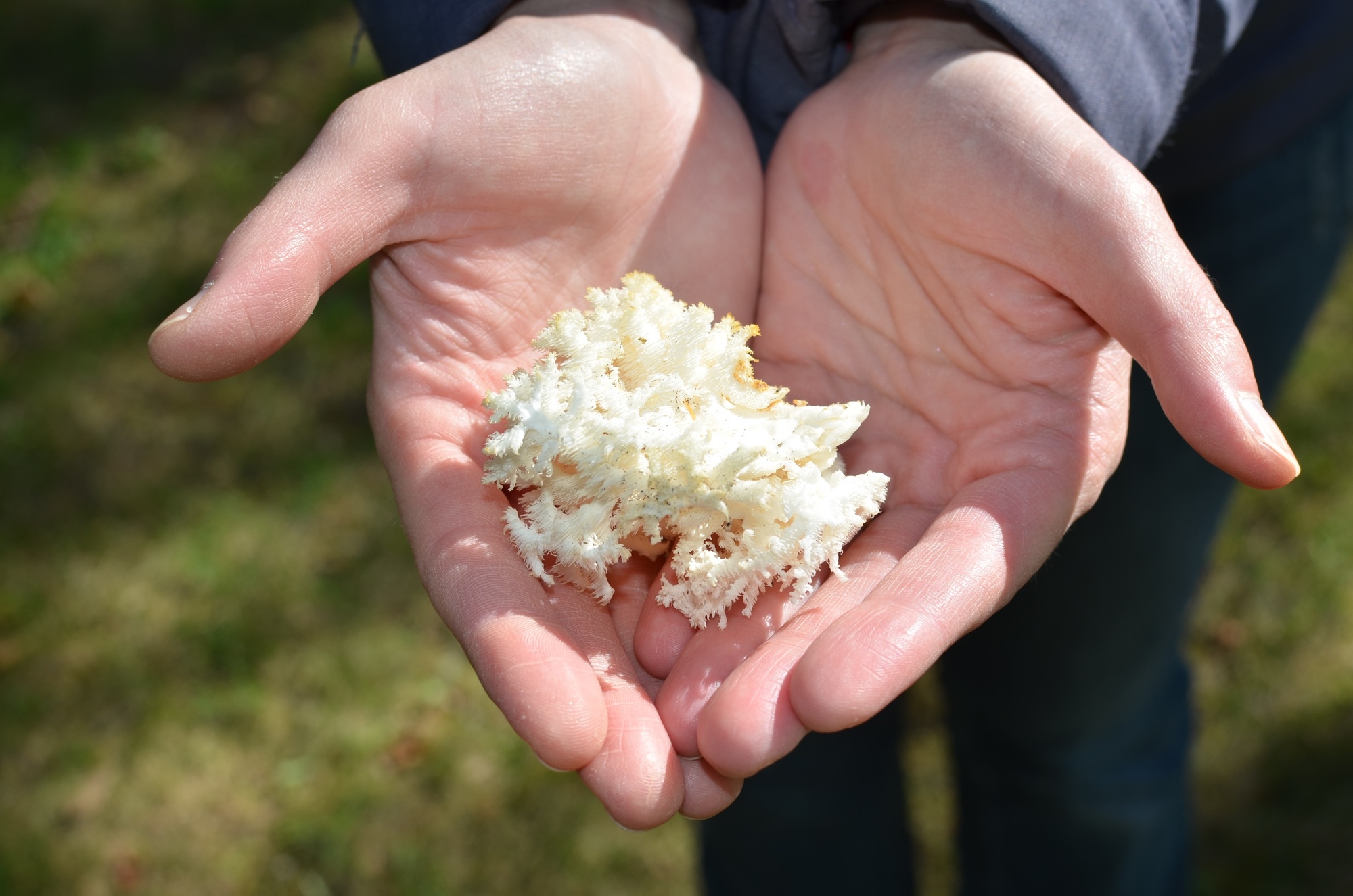Marquette County students participate in forestry field day
About 200 Marquette County schoolchildren recently got a close-up, hands-on look at how consulting foresters operate.
From measuring the height of a towering pine, to aging a maple or searching for signs of forestland pests and disease, these kids learned how to see the forest through the trees.
“We wanted to get as many students together as we could, to get them excited about trees and outdoor education and to have an opportunity to learn about what educational opportunities and professions might be available to them as they get older,” said Justin Miller, president of Green Timber Consulting Foresters, Inc. of Pelkie. “Because we have so many trees in the Upper Peninsula, we feel it’s important for the kids living here to be very familiar with the trees and their uses and our dependence on them.” and to have an opportunity to learn about what educational opportunities and professions might be available to them as they get older,” said Justin Miller, president of Green Timber Consulting Foresters, Inc. of Pelkie. “Because we have so many trees in the Upper Peninsula, we feel it’s important for the kids living here to be very familiar with the trees and their uses and our dependence on them.”
Fifth- through eighth-grade students from the Negaunee Public Schools, Aspen Ridge Elementary in the N.I.C.E. Community School District and the North Star Academy in Marquette were bused to Presque Isle Park in Marquette for a forestry field day, supported by grant funding made available from the Michigan Department of Natural Resources’ Forest Stewardship Program.
At the park, students participated in three 40-minute activities to learn about various aspects of trees and the professions of foresters.
Two students at one station pulled a thin tape measure around the rough-edged bark of a pine, while another student stood back a couple of steps, with a notebook in her hand, intently watching the procedure.
“We’re teaching the students how to measure diameters and tree heights. We’re kind of explaining why foresters need to know that information, what it’s used to determine and then we’re also going to do a little bit about determining (tree) ages with an increment bore,” said Mike Schreiber, a consulting forester with Green Timber Consulting Foresters, Inc., a firm established in northwestern Baraga County in 2001. “Diameter and height are the two main measurements that are used to determine volume in a tree. So, when we go out and do an inventory to determine how much a piece of land is worth, it’s crucial to know what the timber is worth as well.
 “We can use diameter and height measurements, as well as species and other parameters, so we can determine the value of that standing timber on the land, without having to cut down the trees to measure them. “We can use diameter and height measurements, as well as species and other parameters, so we can determine the value of that standing timber on the land, without having to cut down the trees to measure them.
In addition to staff from Green Timber, presenters at the event represented various entities including the DNR, Steigerwaldt Land Services of Marquette, the School of Forest Resources and Environmental Sciences at Michigan Tech and the Earth, Environmental and Geographical Sciences Department at Northern Michigan University.
Rachel McDonald, a DNR forester from the Gwinn field office, led a scavenger hunt group activity on forest health where kids explored how insects, fungus, earthworms and other organisms interact positively or negatively with trees.
Stepping over fallen logs, turning over stones, the kids made their way through fallen leaves, along the base of a hillside, under hemlocks, pines and fir trees.
“Ooh, that’s disgusting,” one boy’s voice echoed through the trees.
“Look at this, look at this,” another said.
Aspen Ridge student Aryana Steede, 9, of Ishpeming enjoyed the hunt.
“We found fungus that could have been destroying the trees and egg holes,” she said.
At a third station, Miller’s wife, Michelle was discussing the properties of oaks and maples, detailing products made from forests.
“A lot of times when you ask people or you think about what comes from trees, we’re thinking that you use lumber, building houses or building benches,” she said. “I wanted to go beyond that in thinking about what can be made from cellulose or what foods come from trees or oils or things like that.”
The lesson opens the eyes of many students.
“They come into it mostly thinking about the things that come from the trunk of the tree or the wood, but some of them come in – like one in the last group knew that the balloon came from a tree because of the rubber – but for others, it's new knowledge, as it's new knowledge for me,” she said. “When I put this together, there’s a lot of things that I learned as I was doing the research for it.”
Miller was loaned numerous items from Michigan Tech for teaching aids, like fiber used to produce high-density fiber board and cellulose beads.
“It’s neat to be able to see those products in that form,” she said.
Michelle Miller works for Green Timber too. She is also an environmental educator pursuing a master’s degree in science education at Michigan Tech, as part of her teacher certification. She’s studying field trip values.
When Miller worked for the Western Upper Peninsula Center for Science, Math and Environmental Education she did  over 500 field trips and she wanted to develop a way to assess their teaching value to students. The center works in conjunction with Michigan Tech and the Copper Country Intermediate School District. over 500 field trips and she wanted to develop a way to assess their teaching value to students. The center works in conjunction with Michigan Tech and the Copper Country Intermediate School District.
Miller said it’s sometimes hard for teachers to justify a field trip to school administrators.
“Some people see it as just a field trip, but I want to show what is learned,” Miller said. “They are actually learning things that are valuable for the content that they’re learning in the classroom as well.”
Alexa Ahola, a fifth-grade teacher at Aspen Ridge Elementary, agrees. She said her class had been studying ecosystems and food chains and webs.
“This was just a really good way for kids to see the importance of not only the trees, but all the products that we get from them and how they need to be managed respectfully and carefully because they are so important to the kids,” Ahola said.
Miller, from Arnheim, is defending her master’s thesis in November.
“I am writing my paper currently,” she said. “Just looking briefly at my (before and after trip) results, there is an increased knowledge for sure, as I was hoping.”
A primary step for consulting foresters is to begin discussions with their landowner clients.
“If somebody wants to have their land logged, they can contact us and we’ll work with them to find out what their goals are first. If they want to manage for wildlife habitat we might do things a little bit differently than if they want to maximize their timber revenue,” Schreiber said.
Once goals and objectives are determined, foresters may next develop a management plan or begin timber harvesting, if the land is suited for it and that’s what the landowner wants. harvesting, if the land is suited for it and that’s what the landowner wants.
“We use DNR Forest Stewardship funding as well to supplement the cost to the landowner of management plans,” Schreiber said. “So, that’s a help for us as well as to the landowners.”
Some of Steede’s classmates said they enjoyed finding out more about foresters and the trees around them.
“I think it’s awesome,” said Athena Kinnunen, 10, from Ishpeming. “I learned that you basically use wood like every single day and that some of the white stuff can be fungus roots.”
Lily Anderson, 10, of Ishpeming Township said the event was “very cool.”
“We got to learn that larvae can destroy the trees and how fungus can destroy trees and that trees make paper, pencils and dollars – money,” she said.
Maddie Tourney, 10, of Ishpeming liked it too.
“It’s fun and it’s really interesting what you can find and what can ruin the forest and it’s really cool,” she said.
With the help of sunny, autumn skies and warm temperatures, Miller said he thought the event was “unbelievable.”
“The location is perfect,” he said. “Marquette is fairly centralized to all the school districts we wanted to target and Presque Isle Park is a very user-friendly venue.”
Miller said there are trees, but there are also sidewalks, bathrooms places for buses to turn around and not as many bugs as in the forest.
“Those are all things folks need to think about when they’re planning field trips in the woods,” he said. “They can’t be bouncing down some logging road for 15 miles.”
After the success this year at Presque Isle Park, a similar forestry field day event is being planned for next year in the Upper Peninsula.
Learn more about “Wheels to the Woods,” a grant program funding busing for outdoor field trips.
Find out more about forestry at the DNR’s website.
Catch upcoming stories by subscribing to free, weekly “Showcasing the DNR” articles. Check out previous Showcasing articles.
/Note to editors: Contact: Mike Smalligan, 517-284-5884 or John Pepin, 906-226-1352. Accompanying photos are available below for download and media use. Suggested captions follow. Credit: Michigan Department of Natural Resources, unless otherwise noted.
Bore: Excitement builds as students watch Mike Schreiber, a consulting forester with Green Timber Consulting Foresters, Inc., begin twisting a tree bore to get a core sample of wood to age this stump.
Fungus: One of the species of coral fungi, likely the crested coral, was found on a forest health scavenger hunt by students during a recent forestry field day in Marquette County.
Group: Aspen Ridge fifth-grader Kendra Scherer tries to determine the height of a tree by gazing through a clinometer, while classmate Athena Kinnunen follows the line of sight. Students Madelyn Reader, Ella Brand and Catherine Bartanen are also pictured, from left.
Health: At the base of a some trees, Rachel McDonald, a DNR forester from the Gwinn field office, discusses forest health with students at Presque Isle Park during a recent forestry field day in Marquette County.
Look: Rachel McDonald, a DNR forester from the Gwinn field office, discusses forest health with students at Presque Isle Park during a recent forestry field day in Marquette County. Looking back is Aspen Ridge fifth-grade student Liam Luke.
Products: Michelle Miller, a Green Timber Consulting Foresters Inc. employee and an environmental educator pursuing a master’s degree in science education at Michigan Tech, discusses forest products and properties of trees with students at Presque Isle Park in Marquette County.
Tree: Mike Schreiber, a consulting forester with Green Timber Consulting Foresters, Inc., shows student Brandyn Hintsala, from Aspen Ridge Elementary School, how to measure the width of a tree at Presque Isle Park in Marquette County.
Additional photos: Justin Miller and Alexa Ahola./
The Michigan Department of Natural Resources is committed to the conservation, protection, management, use and enjoyment of the state’s natural and cultural resources for current and future generations. For more information, go to www.michigan.gov/dnr.
|

 and to have an opportunity to learn about what educational opportunities and professions might be available to them as they get older,” said Justin Miller, president of
and to have an opportunity to learn about what educational opportunities and professions might be available to them as they get older,” said Justin Miller, president of  “We can use diameter and height measurements, as well as species and other parameters, so we can determine the value of that standing timber on the land, without having to cut down the trees to measure them.
“We can use diameter and height measurements, as well as species and other parameters, so we can determine the value of that standing timber on the land, without having to cut down the trees to measure them.
 over 500 field trips and she wanted to develop a way to assess their teaching value to students. The center works in conjunction with Michigan Tech and the Copper Country Intermediate School District.
over 500 field trips and she wanted to develop a way to assess their teaching value to students. The center works in conjunction with Michigan Tech and the Copper Country Intermediate School District. harvesting, if the land is suited for it and that’s what the landowner wants.
harvesting, if the land is suited for it and that’s what the landowner wants.




